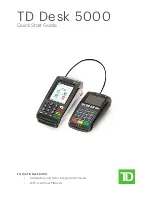
1 General
1.1 General product information
1.2 Cable types
1.3 Symbols in this guide
2 Tools Required
3 Parts List
3.1 Kit content
3.2 Terminal components
3.3 Configuration overview
4 Feeder cable preparation
5 Product Installation
5.1 Take out organizer with pre-connectorized
adapter
drops
5.2 Secure feeder cable in the gel seal cable plugs
5.3 Store the loop (buffer tubes) in the basket
5.4 Store stripped/shaved tubes in the basket of
the base tray
5.5 Make fusion splice and store overlength in the
splice
tray
5.6 Insert the gel strips
6 Close and lock the terminal closure
6.1 Place the organizer with pre-connectorized
adapter drops in the terminal housing
6.2 Close the terminal housing latches and lock
the terminal housing
6.3 Re-entry recommendations
7 Pedestal mounting
7.1 Installation on universal back plate
7.2 Installation on D-Bar
Content
1 General
1.1
General product information
The Mini-OTE 400 is a compact terminal allowing the feeder cable to be field installed in fiber-to-the-x (FTTx) architectures. Featuring pre-
connectorized hardened full-size OptiTap® or mini-size DLX® adapter ports, CommScope’s Mini-OTE 400 terminal enables FTTH deployment in
brown field and green field applications, with or without coax in place. The terminal is designed for a butt splice configuration in pedestal and hand
hole applications. The Mini-OTE 400 terminal is available with 2, 4 or 8 drops.
1.2
Cable types
The Mini-OTE 400 terminal is available with 2, 4 or 8 drops and two entry/exit ports accommodating up to 72F stranded loose tube micro cable
with cable diameter range 4.5 - 6 mm (0.18 ” - 0.24 ” ).
Feeder cable
Ø 4.5 - 6 mm (0.18 ” - 0.24 ” )
Fiber types include single fiber 250micron, A2 fiber.
Mini-OTE 400
I N S T A L L A T I O N I N S T R U C T I O N
Mini-OTE 400
TC-1335-IP
Rev C, March 2017
www.commscope.com
1.3
Symbols in this guide
Note
Presents useful information related to Installation Guide contents, the references and data related to the product’s use, etc.
i
Caution
Describes situations where data loss and incorrect product operation may occur, and provides proper actions to take in these
situations.
!
Warning
Describes a situation where product damage and user injury may occur, and provides proper actions to take in these situations.
All tools to prepare and clean cables
Socket wrench 1/4” or a flat screw driver to secure the hose clamps
Socket wrench 7/16”
Phillips screw driver
Hexagonal wrench
Pincers
2 Tools required






























